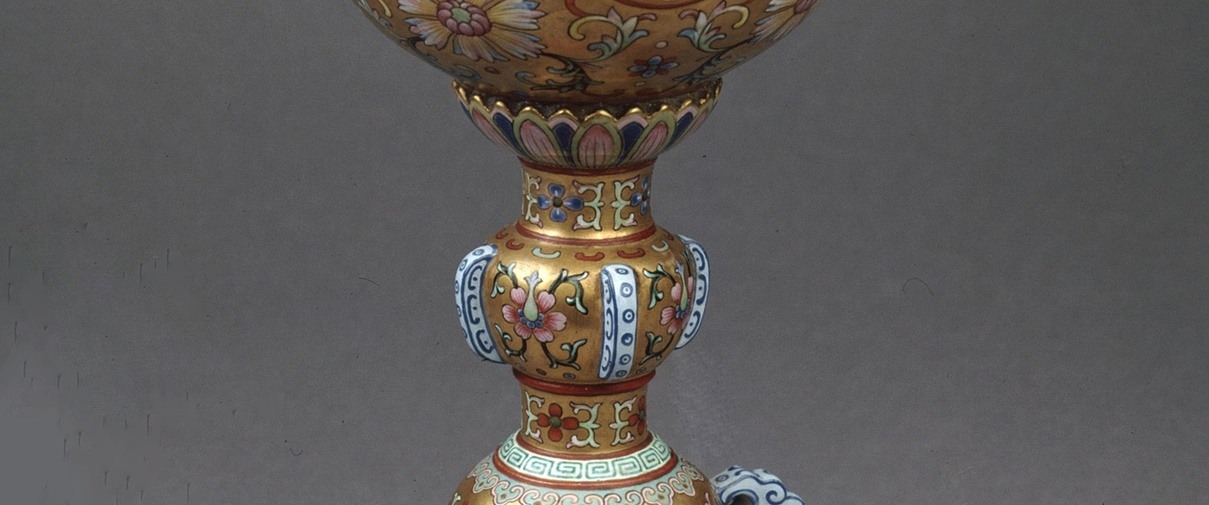Hat stand
Only for the emperor
There are objects in the Princessehof’s collection that were exclusively for the rich and famous. Take this imperial, for example. The Chinese emperor Qianlong, who ruled China from 1736 to 1795, once owned this special object. He was not a man who liked to share his power and wealth with others.
During his campaigns, he conquered massive territories and subjugated many non-Chinese peoples, such as the Mongols and the Uyghurs. Yet he was also a literate and highly cultured man who, moreover, enjoyed an extravagant and luxurious lifestyle. During his lifetime he amassed an enormous art collection, which is now preserved in museums in Beijing and Taipei. And when Qianlong took off one of his many beautiful hats, a servant placed it on a chic hat perfuming stand.
The spherical top of the hat stand contained substances whose fragrances escaped through the openings in the top and side. These openings are shaped as two butterflies facing each other, which comes as no surprise since butterflies are associated with fragrance in China. For example, there is a story in which a girl was so skilled at perfuming herself that she was followed by butterflies. Stylised lotus flowers and scrolls are positioned around the butterfly openings. The mark on the base, comprising the characters of Emperor Qianlong’s name is elegantly executed in gold.
The decoration of the hat stand is very detailed and shows interesting combinations. For example, the central part is gilded and painted with flowers, and there are four cobalt blue ‘buttresses’ that symbolise dragons. In the time of Emperor Qianlong it became fashionable to decorate porcelain to resemble a different material, such as wood or bronze. The porcelain base of this hat stand mimics beautiful red lacquer, decorated with gold.
The emperor must have owned hundreds of hats. They were an important part of court attire, and were worn during all court activities and when undertaking official duties. There was a strict protocol governing this. Winter hats were decorated with velvet or fur; summer hats were often made of bamboo with thin silk. This hat stand is one of the most interesting objects in the Princessehof’s collection, and could also be one of the most valuable. It’s a very refined and luxurious object for the happy few. Spare it a thought the next time you pull on your woolly winter hat, cold and soggy from the Frisian rain.
